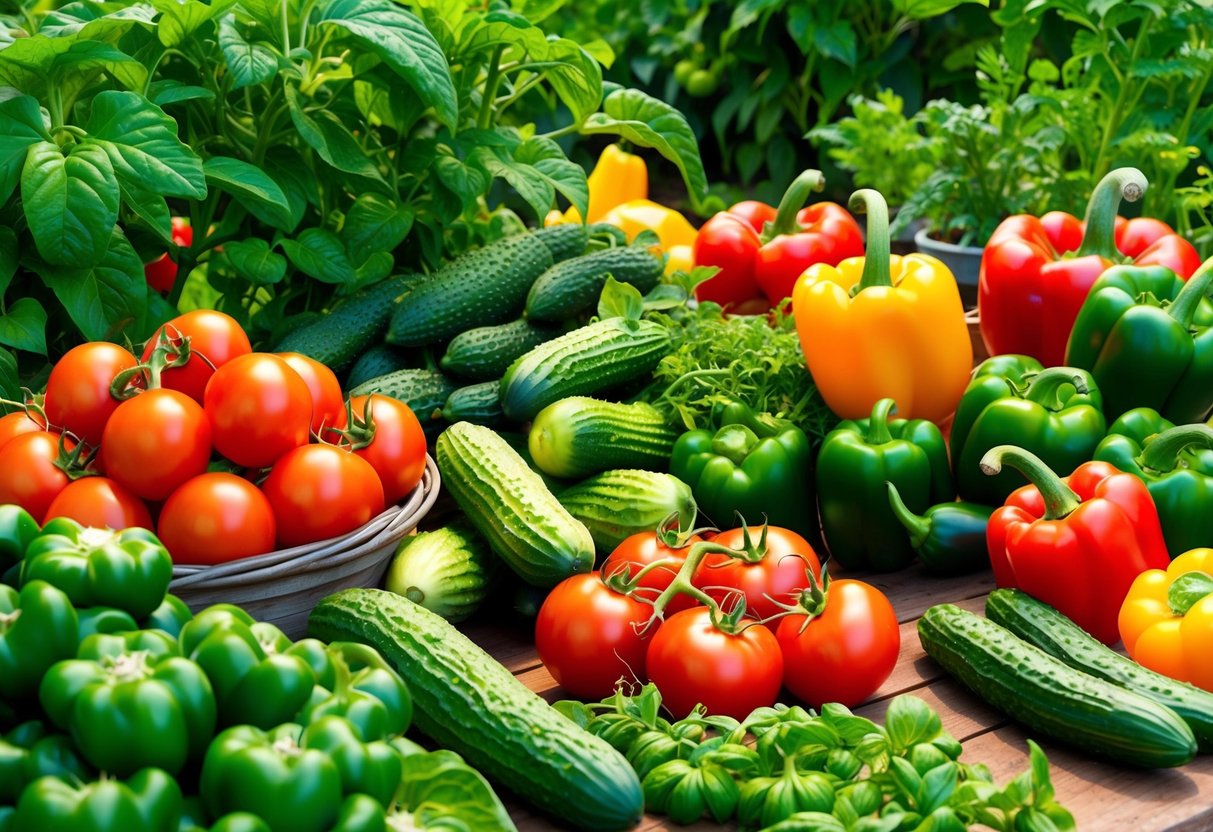
Easy-Growing Root Vegetables for High Returns
Root vegetables are ideal for first-time gardeners looking for reliable harvests and high yields. These crops tolerate different soil conditions, mature quickly, and generally require minimal maintenance.
Radishes: Fast and Rewarding
Radishes offer some of the quickest results for new gardeners, often ready to harvest in as little as three to four weeks. They grow well in most soils and rarely suffer from pests or diseases.
Their fast germination, often within three to seven days, gives growers immediate feedback and helps maintain motivation. Common varieties such as Cherry Belle and French Breakfast flourish in both spring and fall plantings.
Spacing radish seeds about 1 inch apart and keeping the soil moist ensures plump, mild roots. Thinning is important to avoid overcrowding and to get larger, well-formed radishes.
Radishes can even be interplanted with slower-growing vegetables to maximize space. For gardeners wanting rapid, steady returns, radishes are a top pick with very little hassle.
For tips on quick crops, see this list of fast-growing vegetables.
Carrots and Imperator 58 Carrot
Carrots are well-established favorites among home gardeners and offer excellent yields when sown directly into loose, stone-free soil. Consistent moisture is critical during germination, which may take up to three weeks.
Patience is rewarded with abundant roots by summertime. Imperator 58 Carrot is a classic hybrid preferred for its long, slender roots and crisp texture.
This variety grows best in deep, well-drained beds and benefits from early thinning to prevent crowding. Carrots are versatile, thriving in raised beds and in-ground plots.
Key care tips:
- Sow seeds ¼ inch deep in rows 12-18 inches apart
- Thin seedlings to 2 inches apart after true leaves form
- Avoid over-fertilizing, which can result in forked roots
A range of carrot types, including the popular Imperator 58, support steady, homegrown harvests. Carrots are also highlighted as one of the easiest vegetables to grow.
Beets and Potatoes
Beets deliver dual benefits: tender roots and nutrient-rich leaves, both edible. They germinate quickly, usually within seven to 14 days, and thrive in cooler temperatures.
Beet seeds should be planted about ½ inch deep and spaced 2 to 4 inches apart. Regular thinning ensures larger, rounder roots.
Potatoes are another beginner-friendly crop with high yields. They are grown from seed potatoes and prefer loose, fertile soils.
Mounding soil around stems as vines grow helps protect tubers and increases yields. Harvesting is easy—simply dig up the plants once the foliage dies back.
For gardeners aiming for dependable, high-yield crops with straightforward care, beets and potatoes both stand out for their simplicity and productivity. More details on these vegetables can be found in this guide to easy root vegetables.
Productive Beans and Peas for Any Garden
Beans and peas are some of the most productive vegetables for small spaces, making them perfect for new gardeners. Both offer reliable yields, fast growth, and minimal care requirements while supplying fresh, high-quality produce right from home.
Pole Beans vs. Bush Beans
Pole beans and bush beans are two main types of green beans, and the right choice depends on space and desired harvest.
Pole beans require support and grow vertically, reaching several feet tall. This climbing habit saves ground space, making them ideal for compact gardens or containers.
They are also known for an extended harvest window—pole beans can be picked repeatedly for several weeks, allowing for consistent, fresh yields through the season. Bush beans are more compact, forming low, bushy plants that spread outward.
They tend to mature all at once, leading to a concentrated, heavy pick a few weeks after planting. For those interested in easy, fast harvests or those with plenty of horizontal space, bush beans offer high productivity in a short time frame.
Both types thrive in full sun and well-drained soil. Using succession planting and choosing varieties suited for smaller spaces lets gardeners maximize their green bean output even on a balcony or patio.
Snow Peas and Snap Peas
Snow peas and snap peas both produce edible pods, but each brings its own advantages for beginner gardeners.
Snow peas have flat pods and are harvested before the seeds inside fully develop. These peas are favored for quick stir-fries and salads due to their tender, crunchy pods.
Snow peas grow fast and are well-suited to cool seasons. They often give early, high yields before the summer heat.
Snap peas combine the sweetness of garden peas with the crispness of snow pea pods. Their pods are plumper and rounded.
Gardeners appreciate snap peas for providing a reliable source of sweet, snackable vegetables. Both types climb and benefit from trellises or netting.
Even a simple fence boosts production and keeps pods off wet soil, reducing the risk of disease. Consistent harvesting encourages more blooms and pods.
Snow peas and snap peas thrive in cool temperatures. They are a top choice for early spring or fall harvests.
Green Beans and Peas
Green beans (string beans or French beans) and peas are consistent performers for new and experienced growers.
Green beans germinate quickly, often sprouting within a week. They produce prolifically within two months.
They provide multiple harvests from a single planting, especially when picked frequently for tender pods. For tips on maximizing yields and ease of harvest, see how green beans are among the easiest vegetables to grow for high yields.
Peas—including shelling, snow, and snap types—are best planted in early spring or late summer. They prefer cool conditions.
Peas usually require support but reward the grower with abundant sweet pods. Fast-maturing and quick to produce, they are perfect for gardeners who want results without a long wait.
A key strategy with both green beans and peas is staggered sowing. By planting small amounts every two weeks, gardeners enjoy a season-long, continuous harvest.
Both crops benefit from well-prepared soil and regular watering. This supports best yields and flavor.